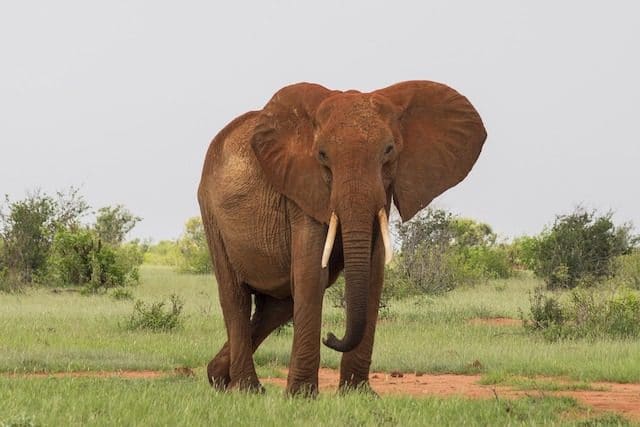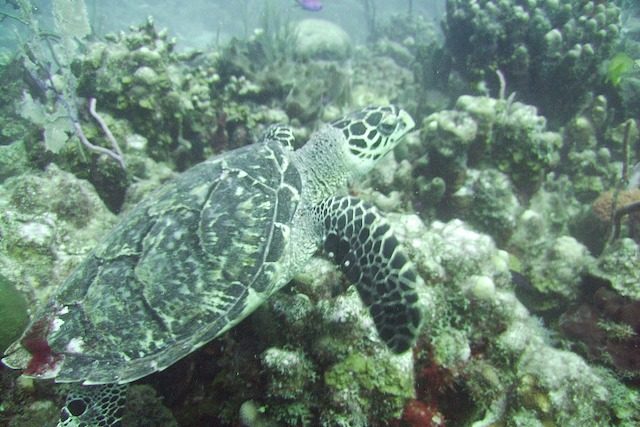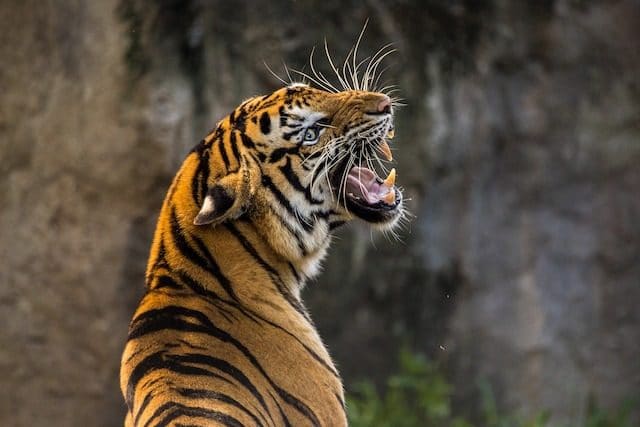On a planet with finite resources, more human demand is placed on many species than supply exists. This contribution to the endangerment of species causes conservation laws to be passed to protect dwindling wildlife. Sadly, the rarest are often the most wanted. Thus, legal protection measures may be skirted by the insatiable traffickers of rare species. In this account, we profile the “most stolen” animals in nature – the dubious record holders for being the most trafficked species on the planet.
10. Macaws

The undisputable kings and queens of the parrot world, macaws, measuring more than three feet in length and adorned in extraordinary multicolored plumes and bare parts, are prime targets of poachers. Able to talk, possessing great intelligence and holding an iconic status among rainforest birds, macaws of a variety of species are being pushed towards extinction by poaching for the pet trade. Species like the Scarlet Macaw and the brilliant blue and gold colored Hyacinth Macaw, the world’s largest parrot are threatened by capture and shipment in defiance of carefully enacted bird conservation regulations at local, national and international levels.
Many die in shipment or in long-term captivity, while wild populations are reduced beyond self-sustaining and resilient levels by the poaching. Fortunately, conservationists are learning effective ways of combatting the carnage. Sometimes, this means taking truly extreme measures of dedication and endurance at great cost to human comfort. A most dramatic example is the avian bodyguard crew of rangers in Belize, who camp out in inclement weather, night and day for the 5-month long portion of the Scarlet Macaw breeding season when chicks are being cared for. Known as the Scarlet Six Biomonitoring Team, the group of five Belizean citizens and a single American citizen are dedicated to stopping insane poaching levels with seemingly crazy dedication, and in this single case among the huge parrot poaching problem, it has been working.
9. African Elephants

African Elephants are the largest land animals in the modern natural world. Their illegal killing for ivory products by poachers is also a huge problem on equal par with the size of the animals. So much so that poaching and elephant poaching are often synonymous in popular discussion across much of Africa. The year 1989 was when the Convention on the International Trade in Endangered Species (CITES) enacted a global ban on the international trade in elephant tusk ivory following declines in the 1980s that were driven by poaching of up to 100,000 elephants annually across Africa. Many regions saw the complete loss of herds, while others were severely thinned.
China is the largest global market for ivory, where the product finds its way into a wide variety of consumer goods. Increasing environmental education on the consumer market end is key, while stopping poaching in elephant habitat represents the other side of the equation. A sadly regular sight across parts of Africa has been piles of confiscated elephant tusks, stacked like a macabre effigy ready to be burned, part of an effort to combat poaching. Tragically, many rangers tasked with protecting the elephants have been added to the growing body count. Zakouma National Park in Chad has a sad display of six rangers who were murdered during morning prayers by heavily armed elephant poachers. The partnership between the Chad government and organization African Parks saw Zakouma transformed into a thriving elephant sanctuary despite the initial tragic killing of the rangers.
8. Saiga Antelope

A rare member of the ungulate order, the Saiga Antelope is a little known antelope among the general public but known all too well to poachers who target the species. Native to Central Asian steppe habitats, the Saiga is equipped with an enormous nose that lends it a cartoonish appearance but serves the practical purpose of warming the freezing air of the Asian steppes before it enters the lungs of the Saiga. Unique among all animal species in appearance, the Saiga are classified by the International Union for the Conservation of Nature as critically endangered. The range of the Saiga used to extend across Mongolia and into China, and included Moldova and Romania, but has dwindled to occur in parts of Russia, Kazakhstan and Uzbekistan and Turkmenistan, plus limited parts of Western Mongolia. The species dates back to the Pleistocene era, surviving into modern times.
Saiga are highly threatened by poaching, adding to the disastrous effects of a bacteria that triggered a plague killing 62 percent of the world population in 2015. Long popular in traditional medicines of Asia, Saiga are being shot for their horns, which are then cut off and ground up or made into shavings and used as a supposed medicinal tonic. Saiga export is strictly illegal in their home countries, but loopholes in the Asian market countries are sold permit trade in stored Saga horn harvested in the 1990s. Newly poached Saiga is thus being disguised as legal Saiga. Armed rangers in Kazakhstan face a tough battle to protect the rare survivors from the Ice Age.
7. Snow Leopard

The rare and exceptional Snow Leopard, highly trafficked despite its small numbers for its coat, is an iconic Asian wild cat. With only about 4,000 of this rare and mysterious species still present in the wild, stopping the poachers is a crucial task. The problem is compounded by the poaching itself; as Snow Leopards become rarer, the value of their pelts becomes even higher through scarcity and growing perceptions of exclusivity despite illegality. While only a percentage of Snow Leopards killed are specifically targeted for their pelts, with protection of livestock being a prime motivation for many shootings, opportunism presents itself as pelts of illegally “culled” animals are then sold on the black market.
Like many endangered and trafficked animals, the Snow Leopard has an organization solely dedicated to its survival, the increasingly powerful Global Snow Leopard Ecosystem Protection Program (GSLEP). This program is formed out of an alliance between the governments of the 12 countries in which Snow Leopards occur, specifically Afghanistan, Bhutan, China, India, Kazakhstan, the Kyrgyz Republic, Mongolia, Nepal, Pakistan, Russia, Tajikistan, and Uzbekistan. Education campaigns and enforcement measures are crucial to stem the flow of Snow Leopards out of nature and into illicit markets. High-tech solutions including DNA analysis are being put to use, showing the unfortunate reality of yet another reason Snow Leopards have had a bounty placed on their heads by traffickers. Snow Leopard bones have been used in medicines in lieu of increasingly scarce tiger bones.
6. Birds of Prey

Birds of prey may be top predators, but they rather ironically fall prey to traffickers thanks to their exceptional hunting ability. Being a status symbol in some cultures, falcons, eagles and other impressive meat-eating birds are poached by collectors and those wanting to keep birds for falconry outside of the normal process for legally acquiring a hunting bird. The International Association for Falconry & Conservation of Birds of Prey identifies poaching of rare species, such as the crisis level plundering of Bonelli’s Eagles in southern Europe by criminal organization members as key threats to raptor conservation worldwide. In just the case of the Bonelli’s Eagle, criminals are putting this species at risk of extinction just by poaching the birds in their nests.
Furthermore, given the prestigious following of falconry and the work and dedication of legitimate falconers, the illegal side of working with raptors is feared as a rogue element capable of giving an undeserved bad name to falconry. As a result of the short term gain available to the poachers who try all types of methods of snaring and seizing young and adult birds of prey, population declines and disturbance and destruction of nesting sites has become a growing threat that makes birds of prey among the most aggressively poached types of wildlife on the planet.
5. Hawksbill Turtles

Thinking about getting a sea turtle shell as a souvenir? Or even just a small piece of jewelry fashioned from the remains of an unfortunate sea reptile? Think again. Sea turtles are enigmatic and charismatic, and that makes them an unfortunate target of poachers on the high seas and beaches alike. The rare Hawksbill Turtle, heavily trafficked for the ornamental uses of its carapace, is one example of the sea turtle plundering problem described by the brilliantly named organization “Too Rare to Wear”, which also offers website visitors a button to report turtle shell products.
Hawksbill Turtles have seen their global population fall by around 85 percent in the last 100 years, affected not only through bycatch but also as a result of persistent poaching activity. Furthermore, the sea turtles have a pattern of turning up in remote areas where they are easily taken by poachers, vulnerable by being too far away from the watchful eye of conservation authorities. The Hawksbill Turtles are fully protected from being harvested in the majority of countries, yet poachers brazenly go afoul of the law due to the demand for turtle products and prices that can be fetched by a good shell, often merely made into tourist trinkets. Red listed as critically endangered, Hawksbills need your help and the best way is to refuse to partake in the carnage by voting with your dollar when offered trinkets or other sea turtle products for sale.
4. Sharks

Move over, Jaws propaganda. Sharks are in far more trouble from humans than humans are from sharks, and we can thank the truly terrifying shark traffickers for the crisis. Sharks of several species, preyed upon for their fins (used in soup), are being killed in extraordinary numbers, their body parts trafficked around the globe for unnecessary culinary use. Close to 73 million sharks end up being slaughtered for their fins yearly in a gruesome and abusive practice that involves cutting the fins of live sharks, which are then cruelly thrown back to die minus their fins, also wasting the meat.
Canada is partially to blame to date in the global crisis, despite a ban on shark finning in Canadian waters, as the largest importer of shark fins outside of Asia, where demand is especially high for shark fin soup. Canadian environmental legislators have failed to ban the importation of shark fins previously, though as of 2019 efforts are underway to enact a ban through the House of Commons. Filmmaker Rod Stewart produced the documentary Sharkwater in 2007, followed by Sharkwater Extinction in 2018 to highlight the plight of sharks and the need for stricter regulations to stop both trafficking and trade permitted through legal loopholes. In 2017, 170,000 kilograms of shark fins were imported into Canada, representing a 60 percent increase from 2012. A petition is available to request a Canadian ban on shark fin importation.
3. Rhinoceroses

Save the Rhino International is just one of the organizations and initiatives centered around combatting the illegal trade in the horns of critically endangered rhinoceros species. Real life unicorns, rhinoceroses are huge ungulates that rank as some of the largest megafauna on the planet. They are also among the most wanted, given that all rhinoceros are critically endangered except for one species of White Rhinoceros, the Southern White Rhinoceros. While banned internationally under CITES, the international rhino horn trade poses a massive threat to rhinos that continues anyways thanks to the demand for rhinoceros horn based elixirs and supposed medicines. Jewelry is made from rhino horn, while the “elixir” made from rhino horn often becomes a symbol of power and social standing, driving poaching.
Growing levels of poaching have placed rhinos as prime targets among the world’s most heavily trafficked animals. In just two years, South Africa saw 1,000 rhinos poached, from 2017 to 2019. Conservationists have enacted some rather drastic measures, comes with its share of controversy. Poison has been placed in the horns of living rhinos by the Rhino Rescue Project, contaminating the horns but not the rhinos, making them unmarketable as the goal. Other measures enacted have included cutting off the horns on living rhinos to dissuade poachers from making a kill.
2. Tigers

Tigers, trafficked for their fur and bones, are the world’s greatest cats. Although lions have been hailed as the “King of Beasts” tigers are actually larger, holding the world record for size. With their extraordinary skin and various myths about the medicinal properties endowed by their bones and other body parts, including blood and even unlikely parts such as claws which are thought to harbor special properties. Tragically, superstition and the desire for the odd aesthetic of a tiger skin has driven wild tiger numbers down to an all-time low of around 3,000 wild tigers.
Their dwindling numbers are spread out across countries as diverse as Russia, India and Malaysia, while also represented in China, Nepal and Bangladesh among other Asian countries. Organized criminal gangs are frequently interrupted trafficking the parts of butchered tigers and their skins into Asian markets, where the demand for tiger wine, made from bones and their skin or even just charms made from tiger claws presents sufficient return for their effort, coupled with penalties that are insufficient and light enforcement in many areas. To combat the highly lucrative trade, conservation initiatives such as Traffic, which established International Tiger Day on July 29, rely on education to reduce demand. Higher tech routes have been taken, including working with the Indian government to create Tigernet, which assists in tracking and apprehending poachers. The Wildlife Protection Society of India set up a system for informants to turn in poachers for a cash reward and also hires traveling informants.
1. Pangolins
Some creatures seem to exist just to defy our attempts to classify them. Pangolins are warm blooded, bonafide mammals related to normal mammals like mice and tigers, but bearing the likeness of a scaled dragon or other mythical reptile. Pangolins make up eight species: four African in origin and four Asian species. Pangolins, related to the carnivores most closely among their mammal relatives, boast the distinction of being the world’s only scaled mammals but also hold the dubious distinction of being the world’s most trafficked animals. Shockingly, this one rare and endangered type of animal accounts for a staggering trafficking count of approximately 100,000 animals per year, according to WildAid, a conservation organization heroically working to curb the slaughter, creating awareness through celebrity support, assisted by renowned Asian celebrities Jackie Chan and Angelababy.
The International Union for Conservation of Nature has designated all species as critically endangered, while international bans on any cross-border transport have been enacted as of 2016. Nevertheless, poaching persists, keeping pangolins in their unfortunate most trafficked spot. Pangolins are used as traditional medicine at unsustainable levels, have taken hold as a popular food item, especially in Southeast Asia and are taken from the wild as exotic pets and used to make exotic jewelry, garments and ornamentation, thanks to their scales. The trade in pangolin products goes back a long time, for even King George III received pangolin armor. In addition to the massive quantities of pangolins trafficked, over 100 trafficking routes have been documented.